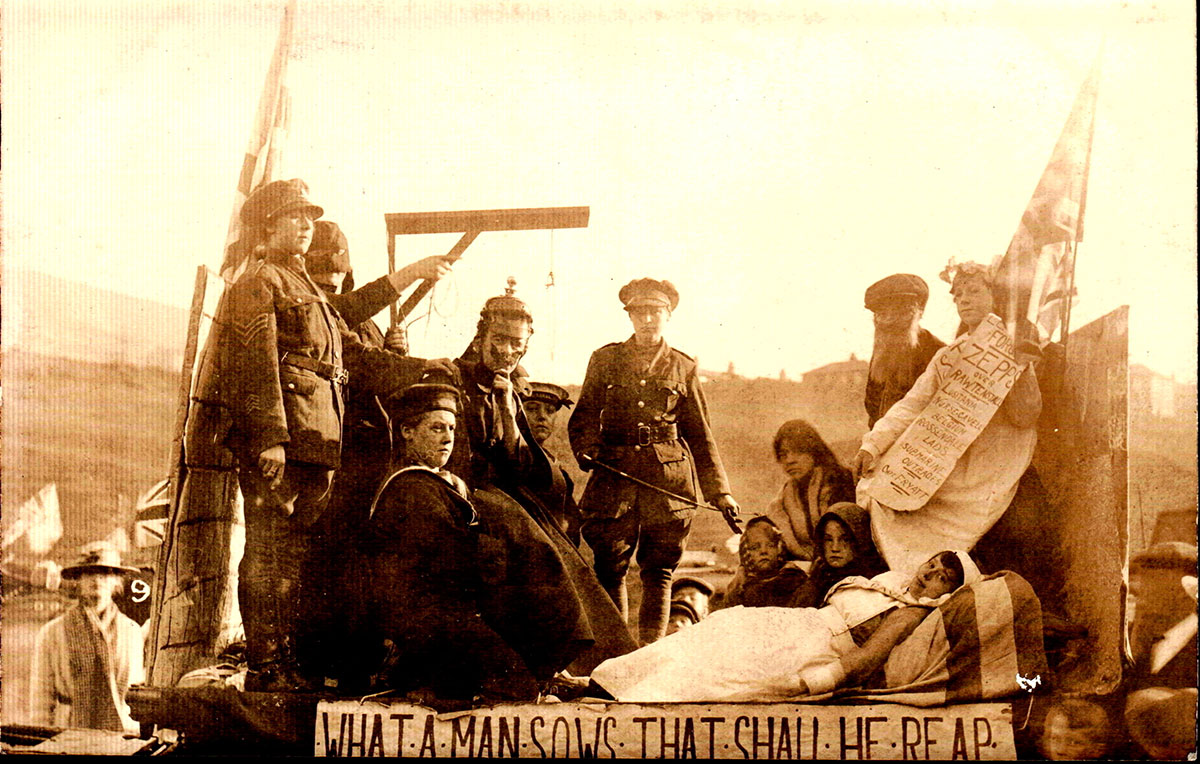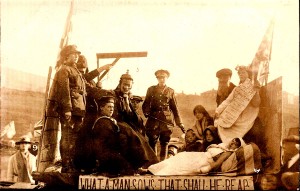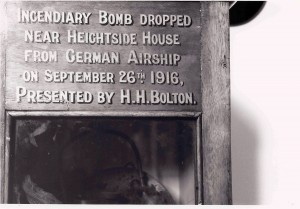In the two years before the war there were hundreds of sightings of what people believed were airships in the skies from across Britain. This caused panic with many people believing that Germany was spying on England, or worse, planning to invade! However, there was little or no hard evidence that any Zeppelin airships were ever sent over Britain by Germany at that time.
They were like modern day UFO sighting phenomena, with bright stars like Venus, fire balloons or hoaxers as the causes of these strange sightings of ‘phantom airships’!
Nevertheless, near midnight on Monday 25th September 1916 during a Zeppelin raid over the North of England one of the airships lost its way trying to follow a train to Manchester in order to bomb the docks and industrial sites and found itself over Rossendale!
There are various accounts of the raid, but the following seems to have happened:
The naval Zeppelin airship, 179 metres long (600 feet) and 18.9 metres (60 feet) in diameter, ‘a cigar-shaped engine of death’ – as it was popularly called- was seen over Lumb near midnight, after following a train that the pilot thought was heading for Manchester. It became almost stationary over Bacup for a while and then resumed its course. Bombs were clearly visible as they fell in the raid that ended nearly two hours later.
The Zeppelin dropped between 10 and 12 bombs and was seen was over Lumb, Rawtenstall, Ewood Bridge, Stonefold, Haslingden, Helmshore, Holcombe and Ramsbottom.
It dropped its first bomb shortly after passing over Seat Naze at Newchurch. It was an incendiary and it fell in the grounds of Height Side House. The bomb did not ignite and a special constable carried it to Cloughfold. Then a tram took it to Rawtenstall police station for safekeeping. This bomb can still be viewed in the Whittaker Museum Rawtenstall.
An explosive bomb fell without detonating in a field behind Lea Bank House.
Then an explosive bomb fell near Hall Carr Road, 30 yards from a hillside farm, creating a large crater into which, according to one witness, “You could have put a horse and cart in it”.
Turning south, the airship crossed Rawtenstall and released another explosive, which made a deep crater in a field beside Greens Lane, two or three hundred yards north west of the Rossendale Golf club house.
Schoolboy Jack Waddington, of Back Chapel Street, Haslingden, said: “As soon as I heard the Zeppelin I was under the bed in a flash. All the lights were out as was the custom in war but a lot of people went out into the streets.”
One bomb dropped near Clod Lane, Haslingden, where there was a gun cotton factory. Ewood Bridge station was destroyed by bombs and, after passing over Helmshore, the Zeppelin flew over Holcombe and damaged windows and doors at a row of cottages. The church clock, school and post office were badly damaged.
The airship dropped two more bombs over Ramsbottom; one fell on a mineral water works in Regent Street and damaged machinery. No Rossendale lives were lost in the whole raid, however the airship with a crew of 17 continued to drop its bombs and in the Bolton area 13 people, including women and children, were killed and six houses destroyed.
The raid finally finished early in the morning of September 26th and the airship returned safely to its base at Nordholz, on the coast of Northern Germany. Zeppelin raids from Nordholz against various places in Britain continued until 1918.
Six months before the Rossendale raid, a Zeppelin airship bombed Cleethorpes, landed and killed 31 men of the Manchester Regiment billeted there.
Two months after the raid on Rossendale the same Zeppelin airship was shot down over the Yorkshire coast with all 17 crew on board killed.




Leave A Comment